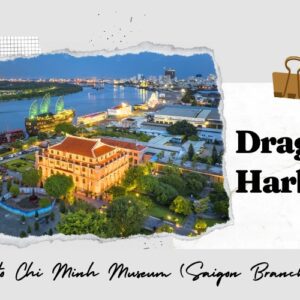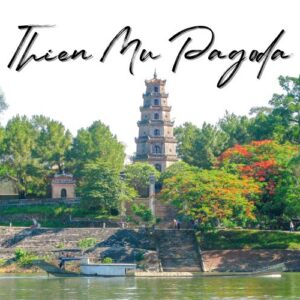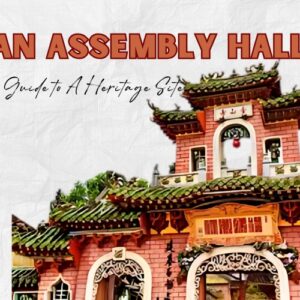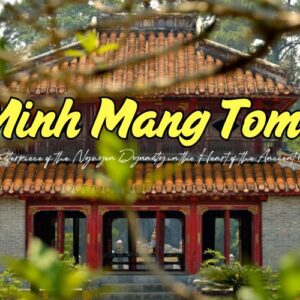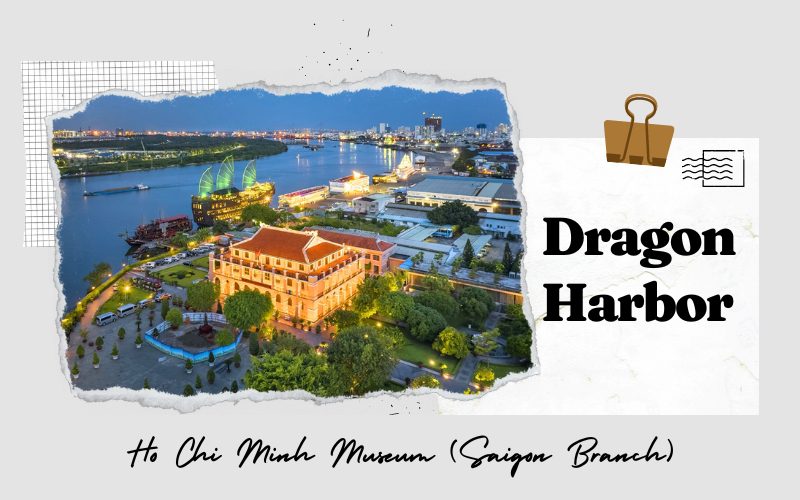
Dragon Harbor (also known as Nha Rong Harbor or Nha Rong Wharf) stands as a renowned historical landmark of immense significance in Vietnam’s past. It was at this site that Uncle Ho embarked on his three-decade-long quest to secure the nation’s salvation. The transformation of Nha Rong into the Ho Chi Minh Museum in Saigon offers a comprehensive exhibition of artifacts and documents linked to Uncle Ho. This site has gained prominence as a destination for tourists eager to delve deeper into Vietnam’s rich history.
General Information
- Vietnamese name: Bến Nhà Rồng
- Address: No.1, Nguyen Tat Thanh Street, Ward 12, District 4, Ho Chi Minh City, Vietnam
- Opening hours: 07:30 AM – 11:30 AM and 01:30 PM – 05:00 PM, from Tuesday to Sunday
- Entrance fee: 2,000 VND/person
Nha Rong Wharf now features a designated private parking zone, allowing you to access the location conveniently by motorbike or car. Opting for personal transportation enhances your mobility during travel and facilitates easy exploration of surrounding attractions.
Alternatively, public transport is also available. You also have the option to board buses like 02, 03, 19, and 56, which provide direct access to Nha Rong Wharf. Alternatively, for group visits, selecting a rented private car presents the advantage of a structured sightseeing itinerary.
Ben Nha Rong & The Story of President Ho Chi Minh
Located at the confluence of the Saigon River, Nha Rong Harbor finds its location at the terminus of Nguyen Tat Thanh Street. Translating to “Dragon House,” “Nha Rong” signifies its historical significance.
In its early days, Nha Rong served as a bustling commercial harbor within Ho Chi Minh City. This establishment, crafted by the French between 1862 and 1863, facilitated the exchange of goods, weaponry, and essential materials during the era of French occupation in Vietnam.
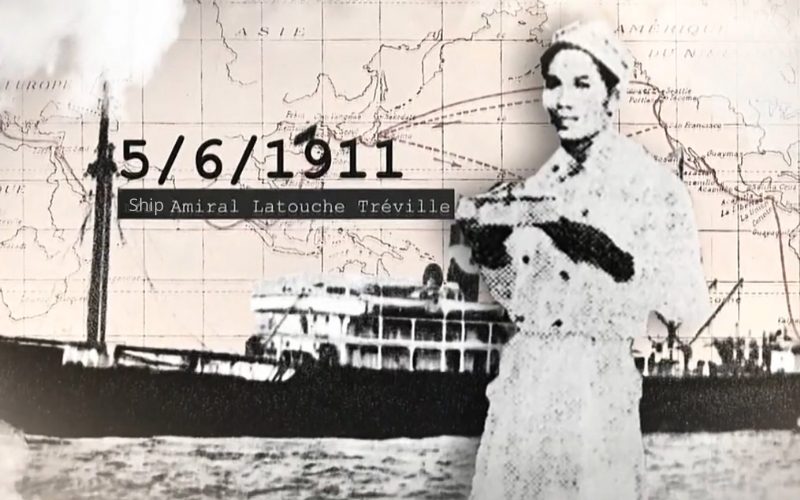
Nguyen Tat Thanh and the ship Admiral Latouche Treville
On the 5th of June, 1911, at this very harbor, Nguyen Tat Thanh, also known as Van Ba, a fervent young patriot who would later become President Ho Chi Minh, embarked on a voyage aboard the ship Admiral Latouche Treville, setting sail for France at the age of 21. This marked the inception of a prolonged journey dedicated to seeking pathways to liberate the homeland, as Vietnam endured the grip of French control during wartime. Three decades hence, in 1941, having traversed various countries across the globe, he returned to Vietnam to spearhead the revolution. Guided by Ho Chi Minh’s adept leadership, Vietnam ultimately achieved its hard-fought independence.
In honor of President Ho Chi Minh’s significant contributions, the Ho Chi Minh City People’s Committee decided to transform Nha Rong Harbor into Ho Chi Minh Museum (Saigon Branch) on September 3rd, 1979. Emerging as one of the city’s most remarkable museums, it houses an extensive collection of photographs and artifacts chronicling the life and endeavors of President Ho Chi Minh. This museum now stands as a poignant tribute, serving as a space of remembrance for the esteemed Vietnamese leader. It has captivated a multitude of local citizens as well as international tourists who share a keen interest in the life of Ho Chi Minh and the principles of communism.
The Construction & Architecture of Dragon Harbor
Upon stepping onto Nha Rong Harbor’s premises, you will be treated to a remarkable opportunity to appreciate its distinctive architectural design. Notably, the rooftop is adorned with two ceramic statues resembling Vietnamese dragons. These dragons hold deep cultural significance in Vietnam, frequently gracing pagodas, temples, and residential dwellings. This emblematic feature is the inspiration behind the name “Nha Rong,” which translates to “Dragon House.”
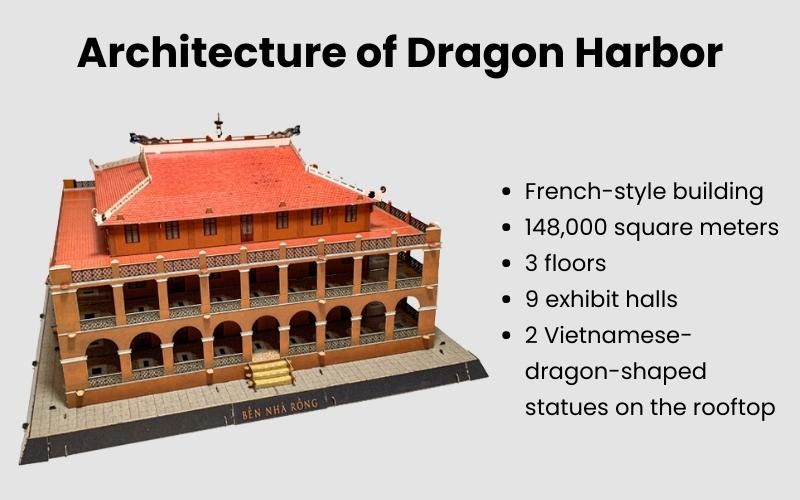
The architecture of Dragon Harbor
In its initial stages, the museum spanned an area of 250 square meters, housing 03 exhibition rooms. Presently, it has expanded to encompass 09 exhibit halls, sprawling across over 148,000 square meters. The museum’s collection comprises an impressive assortment of over 11,300 documents and artifacts, accompanied by 3,300 specialized books dedicated to President Ho Chi Minh. This rich assemblage provides visitors with insights into Ho Chi Minh’s life and his revolutionary journey. Additionally, the museum hosts a variety of engaging activities, including workshops, seminars, exhibitions, and cinema screenings, seamlessly integrating tourism with traditional patriotic education.
What to See in Dragon Harbor
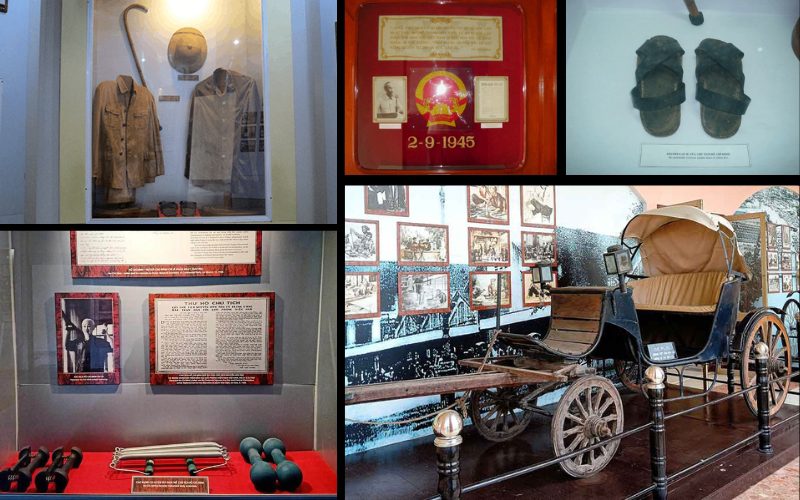
Inside Ho Chi Minh Museum
Within the current configuration of 09 exhibit halls, 06 areas are dedicated to specific subjects encompassing documents, artifacts, and images associated with President Ho Chi Minh’s life and revolutionary trajectory. The exhibition rooms are categorized as follows:
- Topic 1: Chronicles the childhood, youth, and early patriotic and revolutionary endeavors of President Ho Chi Minh, as well as his study of Marxist-Leninist theory and the affirmation of Vietnam’s revolutionary path (1890-1920).
- Topic 2: Explores how President Ho Chi Minh innovatively applied V.I. Lenin’s principles to issues concerning ethnicity and colonialism. This exhibition also delves into his establishment of the political party for the Vietnamese working class (1920-1930).
- Topic 3: Chronicles President Ho Chi Minh’s instrumental role in orchestrating and leading the triumphant August Revolution, culminating in the foundation of the Socialist Republic of Vietnam. This segment also highlights his guidance of resistance against the French colonial forces (1930-1954).
- Topic 4: Details President Ho Chi Minh’s leadership during the socialist revolution in the northern region and his efforts against American aggression, resulting in the liberation of the South and the reunification of the country (1954-1969).
- Topic 5: Illustrates how the Vietnamese people fervently followed President Ho Chi Minh’s vision to liberate the South, fostering national reunification. It also underscores ongoing nation-building efforts for peace, unity, independence, prosperity, and strength (1969 to the present).
- Topic 6: Showcases 208 pictures, documents, and artifacts with the topic “President Ho Chi Minh’s feelings for the South and the feelings of the South people towards Uncle Ho”. The room dedicated to depicting images and relics illustrating Uncle Ho’s sentiments towards the people of the South, reciprocated by their affection for him, brims with profound emotion. The photographs, letters, and gifts exchanged between Uncle Ho and the Southern populace echo boundless love. This space often elicits intense reactions from visitors; emotions are stirred as they immerse themselves in the snapshots of this poignant connection.
The other 03 specialized rooms cater to news and contemporary political propaganda requirements. For more information on the temporary exhibition, you can visit its official website here.
Since 1995, the organization has orchestrated 20 distinct exhibitions within the museum and conducted 16 mobile exhibits in outlying areas and suburban districts. All galleries have undergone comprehensive enhancement, bolstering both content and presentation elements to captivate viewers.
Beyond these core endeavors, Dragon Wharf also engages in educational initiatives, including the facilitation of scholarly conferences, cross-generational discussions, and dialogues centered around President Ho Chi Minh.
Important Visiting Notes
Ben Nha Rong holds significant historical prominence, boasting an array of invaluable artifacts for public viewing, so, it is essential to take heed of the following guidelines during your visit:
- Refrain from Touching Exhibits: Please avoid touching the displayed exhibits to ensure their preservation.
- Maintain Quietness: Maintain a serene ambiance by refraining from loud conversations or noise during your museum visit.
- Photography and Filming Guidelines: Adhere to the designated limitations and precautions when capturing photos or videos within the museum premises.
- Baggage Handling: For a seamless museum experience, kindly deposit backpacks and bags upon entering the museum gate to facilitate your exploration.
Dragon Harbor stands as a renowned attraction within Ho Chi Minh City, celebrated for its rich historical significance and enduring architectural charm. It is worth every visit, especially for historical lovers to Ho Chi Minh City. Have you ever visited this museum? If yes, please share your feelings by commenting below. If not, don’t hesitate to plan your trip now with IDC Travel.

